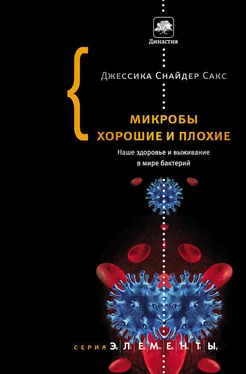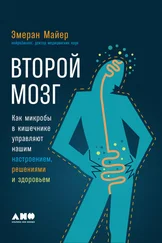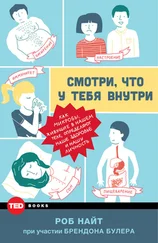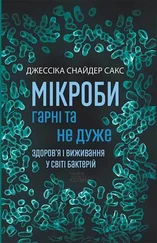6 Rudi Westendorp et al., “Optimizing Human Fertility and Survival”, Nature Medicine 7 (2001), 873; G. Doblhammer, J. Oeppen, “Reproduction and Longevity: The Effect of Frailty and Health Selection”, Proceedings of the Royal Society of London 270 (2003), 1541–1547; D. Lio et al., “Inflammation, Genetics, and Longevity”, Journal of Medical Genetics 40 (2003), 296–299.
7 Rudi Westendorp, “Are We Becoming Less Disposable?” EMBO Reports 5 (2004), 2–6.
8 Y. W. Miller et al., “Sequential Antibiotic Therapy for Acne Promotes the Carriage of Resistant Staphylococci on the Skin of Contacts”, Journal of Antimicrobial Chemotherapy 38 (1996), 829–837; David Margolis et al., “Antibiotic Treatment of Acne May Be Associated with Upper Respiratory Tract Infections”, Archives of Dermatology 141 (2005), 1132–1136; Ross Levy et al., “Effect of Antibiotics on the Oropharyngeal Flora in Patients with Acne”, Archives of Dermatology 139 (2003), 467–471.
9 K. G. Naber, “Treatment Options for Acute Uncomplicated Cystitis in Adults”, Journal of Antimicrobial Chemotherapy 46 (2000), S23 – S277.
10 Susan Swedo et al., “Pediatric Autoimmune Neuropsychiatric Disorders Associated with Streptococcal Infections: Clinical Description of the First 5 °Cases”, American Journal of Psychiatry 155 (1998), 264–271; F. Breedveld et al., “Minocycline Treatment for Rheumatoid Arthritis: An Open Dose Study”, Journal ofRheumatology 17 (1990), 43–46.
11 Marie-Therese Labro, “Antibiotics as Anti-inflammatory Agents”, Current Opinions in Investigational Drugs 3 (2002), 61–68; P. N. Black,
“Anti-inflammatory Effects of Macrolide Antibiotics”, European Respiratory Journal 10 (1997), 971–972.
12 J. Thomas Grayston, “Does Chlamydia pneumoniae Cause Atherosclerosis?” Archives of Surgery 134 (1999), 930–934; J. D. Beck et al., “Dental Infections and Atherosclerosis”, American Heart Journal 138 (1999), S528 – S533.
13 Francisco Gimenez-Sanchez et al., “Treating Cardiovascular Disease with Antimicrobial Agents: A Survey of Knowledge, Attitudes, and Practices Among Physicians in the United States”, Clinical Infectious Diseases 33 (2001), 171–176.
14 Christopher Cannon et al., “Antibiotic Treatment of Chlamydia pneumoniae After Acute Coronary Syndrome”, New England Journal of Medicine 352 (2005), 2545–2554; Thomas Grayston et al., “Azithromycin for the Secondary Prevention of Coronary Events”, New England Journal of Medicine 352 (2005), 1637–1645.
15 Jeffrey Anderson, “Infection, Antibiotics and Atherothrombosis – End of the Road or New Beginnings”, New England Journal of Medicine 352 (April 21, 2005), 1706–1709.
16 WHO Annual Report on Infectious Disease: Overcoming Antimicrobial Resistance (Geneva: World Health Organization, 2000), имеется в сети по адресу: www.who.int / infectious-disease-report / 2000/.
17 Amy Pruden et al., “Antibiotic Resistance Genes as Emerging Contaminants: Studies in Northern Colorado”, Environmental Science and Technology 40 (2006), 7445–7450.
18 Elissa Ladd, “The Use of Antibiotics for Viral Upper Respiratory Tract Infections: An Analysis of Nurse Practitioner and Physician Prescribing Practices in Ambulatory Care, 1997–2001”, Journal of the American Academy of Nurse Practitioners 17 (2005), 416–424; Arch Mainous III et al., “Trends in Antimicrobial Prescribing for Bronchitis and Upper Respiratory Infections Among Adults and Children”, American Journal of Public Health 93 (2003), 1910–1914.
19 H. Bauchner et al., “Parents, Physicians, and Antibiotic Use”, Pediatrics 103 (1999), 395–398; R. L. Watson et al., “Antimicrobial Use for Pediatric Upper Respiratory Infections: Reported Practice, Actual Practice, and Parent Beliefs”, Pediatrics 104 (1999), 12511257; R. L. Watson et al., “Inappropriateness and Variability of Antibiotic Prescription Among French Office-Based Physicians”, Journal of Clinical Epidemiology 51 (1998), 61–68; E. E. L. Wang et al., “Antibiotic Prescribing for Canadian Preschool Children: Evidence of Overprescribing for Viral Respiratory Infections”, Clinical Infectious Diseases 29 (1999), 155–160; L. F. McCaig, J. M. Hughes, “Trends in Antimicrobial Drug Prescribing Among Office Based Physicians in the United States”, Journal of the American Medical Association 273 (1995), 214–219.
20 Rachida el Moussaoui et al., “Effectiveness of Discontinuing Antibiotic Treatment After Three Days Versus Eight Days in Mild to Moderate-Severe Community Acquired Pneumonia: Randomised, Double-Blind Study”, British Medical Journal 332 (2006), 1355–1362.
21 Christopher Stille et al., “Increased Use of Second-Generation Macrolide Antibiotics for Children in Nine Health Plans in the United States”, Pediatrics 114 (2004), 1206–1211; Mainous et al., “Trends in Antimicrobial Prescribing”.
22 William Check, “Real-Time PCR for the Rest of Us”, College of American Pathologists/ CAP Today, June 2006.
23 Didier Guillemot et al., “Reduction of Antibiotic Use in the Community Reduces the Rate of Colonization with Penicillin G-nonsusceptible Streptococcus pneumoniae”, Clinical Infectious Diseases 41 (2005), 930–938.
24 W. Michael Dunne et al., “Clinical Microbiology in the Year 2025”, Journal of Clinical Microbiology 40 (2002), 3889–3893.
25 W. J. Wilson et al., “Sequence-Specific Identification of 18 Pathogenic Microorganisms Using Microarray Technology”, Molecular and Cellular Probes 16 (2002), 119–127.
26 Письмо Тома Слезака (Tom Slezak) автору от ноября 2006 г.
27 Daniel Sinsimer et al., “Use of Multiplex Molecular Beacon Platform for Rapid Detection of Methicillin and Vancomycin Resistance in Staphylococcus aureus”, Journal of Clinical Microbiology 43 (2005), 4585–4591.
28 J. T. McLure et al., “Performance of an Investigational Commercial Real-Time PCR Assay for Direct Detection of Staphylococcus aureus and MRSA on Clinical Samples”, poster 357, 44th annual meeting of the Infectious Disease Society of America, Toronto, October 10, 2006.
29 Там же.
30 Письмо Лори Хендерсона (Lori Henderson, заместитель директора по маркетингу компании GeneOhm) автору от ноября 2006 г.
31 Jaana Harmoinen et al., “Orally Administered Targeted Recombinant Beta-lactamase Prevents Ampicillin-Induced Selective Pressure on the Gut Microbiota: A Novel Approach to Reducing Antimicrobial Resistance”, Antimicrobial Agents and Chemotherapy 48 (2004), 75–79; “Ipsat Therapies Announces Positive Phase II Results for Lead Product Against Antibiotic Resistance and Hospital Acquired Infection”, 15th European Congress of Clinical Microbiology and Infectious Diseases, Copenhagen, April5, 2005.
32 Klaus Stoeckel et al., “Stability of Cephalosporin Prodrug Esters in Human Intestinal Juice: Implications for Oral Bioavailability”, Antimicrobial Agents and Chemotherapy 42 (1998), 2602–2606.
33 W. Graninger, “Pivmecillinam – Therapy of Choice for Lower Urinary Tract Infection”, International Journal of Antimicrobial Agents 22 (2003), suppl. 2, 73–78; George Zhanel et al., “A Canadian National Surveillance Study of Urinary Tract Isolates from Outpatients: Comparison of the Activities of TrimethoprimSulfamethoxazole, Ampicillin, Mecillinam, Nitrofurantoin, and Ciprofloxacin”, Antimicrobial Agents and Chemotherapy 44 (2000), 1089–1092.
Читать дальше
Конец ознакомительного отрывка
Купить книгу


![Джордж Оруэлл - Хорошие плохие книги [сборник]](/books/33144/dzhordzh-oruell-horoshie-plohie-knigi-sbornik-thumb.webp)









